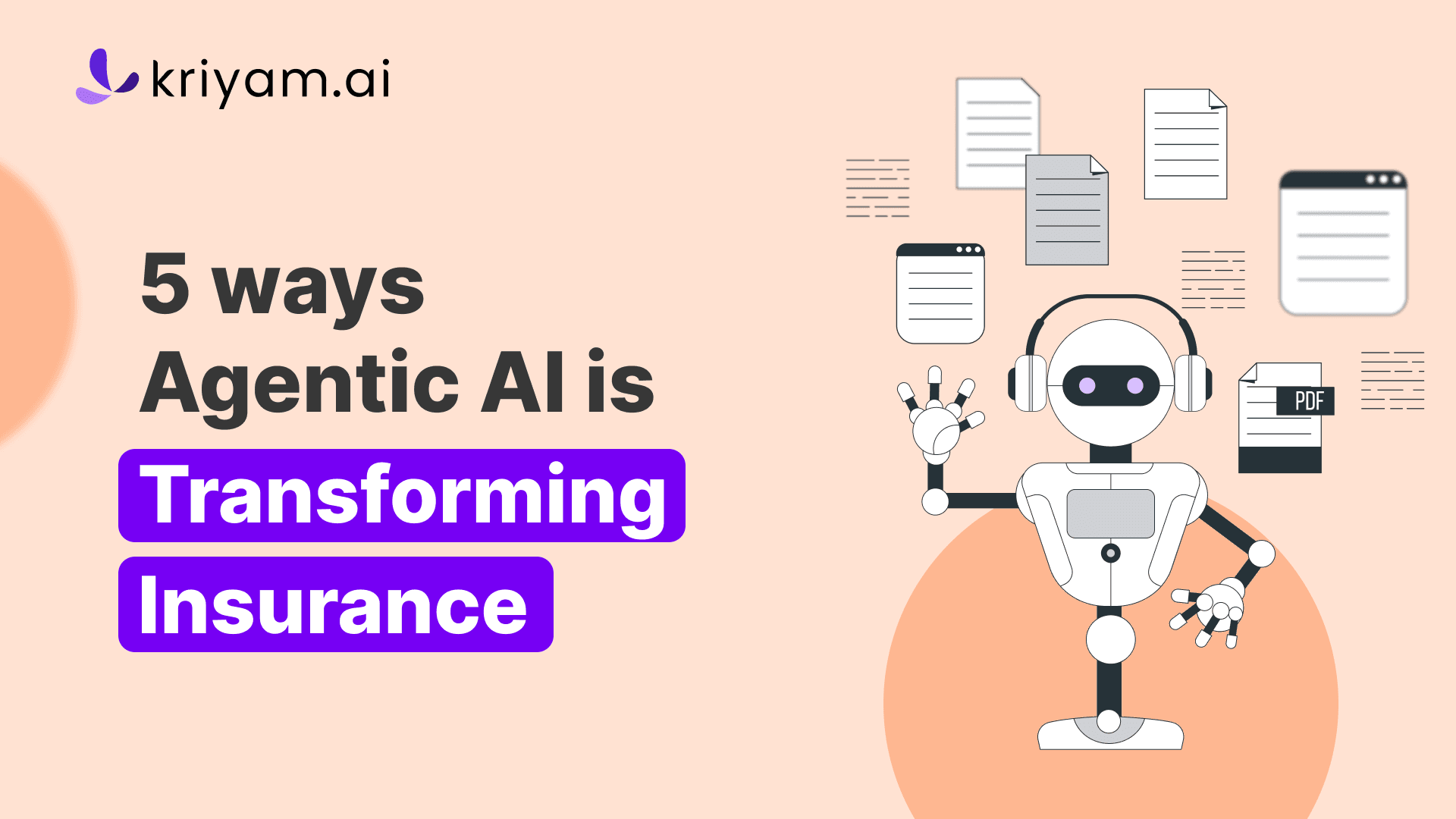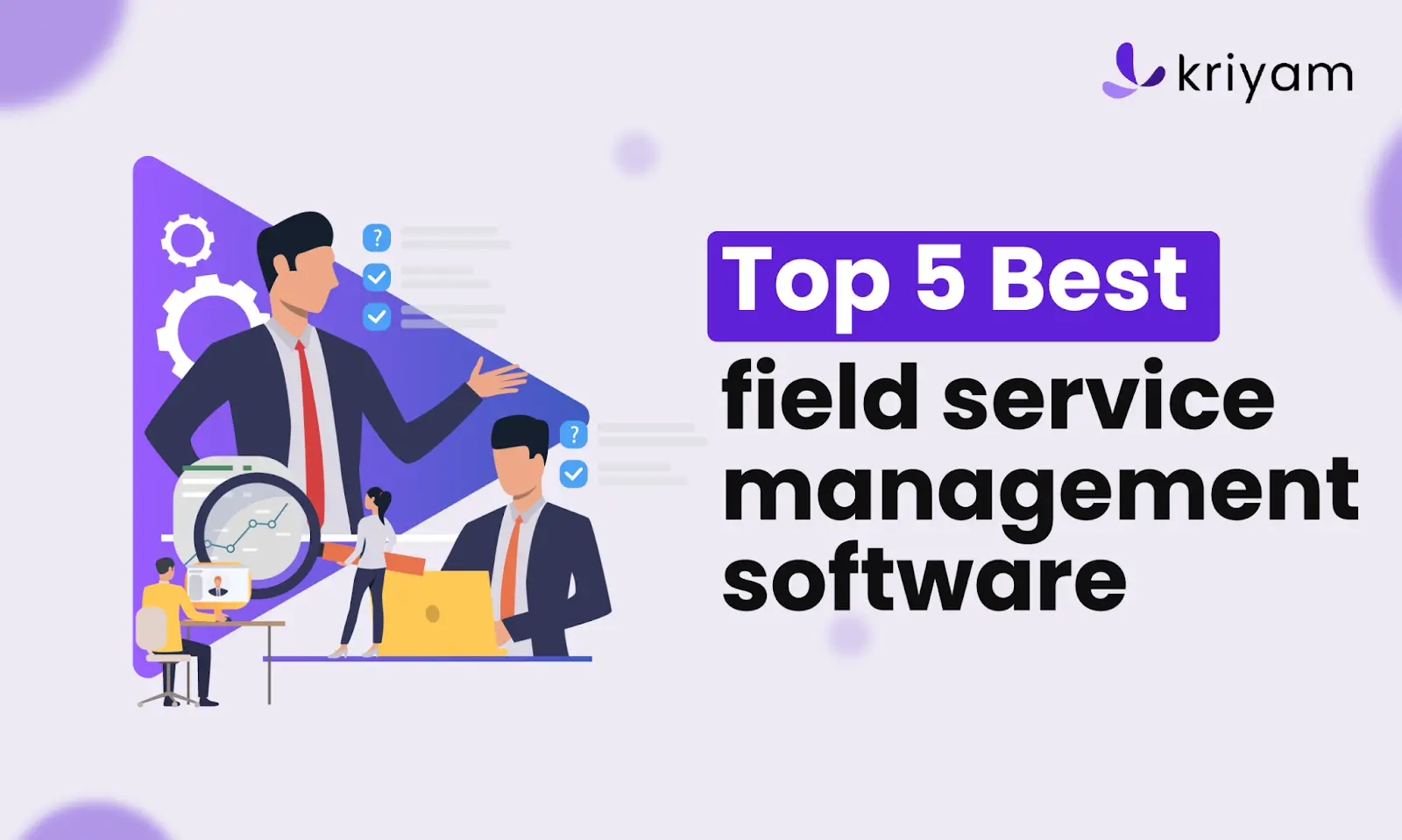5 Ways Agentic AI is Transforming Insurance Industry
Sreyan M Chowdhury | 30th March, 2025
5 min reads
Sreyan M Chowdhury | 30th March, 2025 | 5 min reads

In an industry where milliseconds can determine customer loyalty and operational efficiency separates market leaders from laggards, insurers face mounting pressure to innovate. For solution-aware leaders who already recognize AI’s potential, the next frontier lies in Agentic AI—systems that act autonomously, make data-driven decisions, and redefine how insurers underwrite risks, process claims, and engage customers.
Unlike Generative AI, which creates content, Agentic AI executes tasks with precision, learns from real-time data, and adapts to dynamic environments.
This blog explores how pioneering insurers are leveraging Agentic AI to solve critical challenges—from eliminating claims backlogs to hyper-personalizing policies—while addressing ethical and operational hurdles. For organizations ready to move beyond theoretical AI discussions, Agentic AI represents actionable transformation.
Agentic AI in Insurance: Beyond Automation to Strategic Autonomy
Agentic AI systems are designed to operate independently within defined boundaries, analyzing data, making decisions, and executing tasks without constant human oversight.
While Generative AI (e.g., ChatGPT) generates policy documents or marketing copy, Agentic AI actively solves problems—like approving a claim, adjusting a premium based on IoT data, or flagging fraud.
Agentic AI transcends traditional automation by embedding decision-making into core operations. Unlike rule-based systems that follow static workflows, Agentic AI dynamically interprets context, weighs risks, and optimizes outcomes in real time. For instance, it might not only adjust premiums using IoT data but also predict emerging risks—like climate patterns—to proactively redesign coverage models. This autonomy transforms AI from a task executor into a strategic partner, enabling insurers to navigate complexity, mitigate systemic risks, and unlock innovation at scale.
Top 5 Real-World Use Cases of Agentic AI
1. Claims Processing Agents
Automates the entire claims lifecycle from initial assessment to final approval, reducing human error and speeding up claim resolutions.
Example: Lemonade’s AI Claims Bot
Lemonade, the insurtech disruptor, deploys Agentic AI to resolve claims in as little as three seconds. Their AI “bot” cross-references policy details, historical data, and real-time inputs (e.g., weather reports for property claims) to validate and pay claims autonomously.
Case Study: During a recent hailstorm, the system processed 1,200 claims instantly, reducing administrative costs by 75% and cutting fraud rates by 50% through anomaly detection.
Impact:
- Eliminates human bias
- Scales operations during peak demand
- Builds trust through transparency
Read more about AI in Insurance Claims
2. Dynamic Underwriting: Personalised Policies at Scale
By tracking and analysing customer data, insurers can offer customised policies that align with specific risk profiles and preferences.
Example: Oscar Health’s AI-Driven Risk Models*
Oscar Health uses Agentic AI to analyze wearable device data (e.g., Fitbit) and adjust health insurance premiums dynamically. If a member’s activity levels drop, the AI nudges them with wellness incentives and recalculates risk scores in real time.
Results:
✔️ 18% reduction in claim payouts
✔️ 22% improvement in customer retention
Impact:
- Turns passive data into proactive risk management
- Rewards healthy behaviors
- Reduces long-term liabilities
3. Fraud Detection: Unmasking Sophisticated Schemes
Continuously analysisng data to update customer risk profiles dynamically, ensuring insurers can respond promptly to changing risks.
Example: AXA’s AI Fraud Squad
AXA’s AI system analyzes millions of claims globally, flagging patterns invisible to humans.
Success Story: The AI uncovered a fraud ring across six countries by linking subtle inconsistencies in medical invoices and accident reports. It autonomously froze payouts, saving €35 million annually.
Impact:
- Reduces false positives by 40%
- Frees investigators to focus on high-risk cases
Read more about Types of Frauds and their Prevention
4. 24/7 Customer Service: AI Agents That Understand Context
Providing continuous, real-time support, Agentic AI empowers insurers to address customer needs instantly—day or night.
Example: Allstate’s Virtual Assistants
Allstate’s "Allstate Business Insurance Expert (ABIE)" handles 70% of customer queries without human intervention.
Hurricane season case: ABIE processed 500,000 inquiries in 48 hours, maintaining 94% customer satisfaction.
Impact:
- Frees human agents to handle complex cases
- Provides instant, consistent service
5. IoT-Enabled Risk Prevention: From Reactive to Proactive
By integrating real-time data from IoT devices, insurers can move beyond reacting to incidents and instead prevent them before they occur, enhancing overall risk management.
Example: John Hancock’s Vitality Program
John Hancock integrates IoT data from smart home devices (e.g., water leak sensors) and wearables into its life insurance policies. Agentic AI analyzes this data to:
✔️ Offer discounts for safe behaviors (e.g., gym visits)
✔️ Send real-time alerts to prevent incidents (e.g., fire hazards)
Impact:
- 15% lower premiums
- 30% fewer claims
Future Trends: Where Agentic AI Is Headed
🔹 IoT Integration: Sensors in factories, cars, and homes will feed real-time data to AI systems, enabling usage-based insurance (e.g., Tesla’s real-time driving behavior premiums).
🔹 Ethical AI Frameworks: Regulators will demand transparency in AI decision-making. Companies like Lemonade now publish "AI explainability reports" to build trust.
🔹 Cross-Industry Ecosystems: Agentic AI will collaborate with healthcare providers, auto repair networks, and smart cities to streamline services (e.g., auto AI scheduling repairs post-accident).
Conclusion: The Agentic Advantage
Agentic AI isn’t just another tech buzzword—it’s a $1.2 trillion opportunity for insurers by 2030 (McKinsey). Early adopters like Lemonade and AXA are already seeing:
- 80% faster operations
- 30% cost reductions
- NPS scores outperforming competitors by 25 points
Whether you’re automating claims, personalizing policies, or preventing fraud, the tools exist to act today.
The question isn’t whether to adopt Agentic AI, but how fast.

About the author
Sreyan M Chowdhury
Marketing Manager
Sreyan M Chowdhury | Marketing Manager
He is passionate about technology, automation, and SaaS. Blends creative strategy with data-driven insights to drive growth and streamline digital experiences. Always exploring new tech to stay ahead of the curve.
Interests: AI, Automation, SAAS
Content Overview
Share
FEATURED
Automation
Top 5 Best Field Service Management Software in 2025
Best Field Service Management Software
Shreyas R
27th November, 2023


